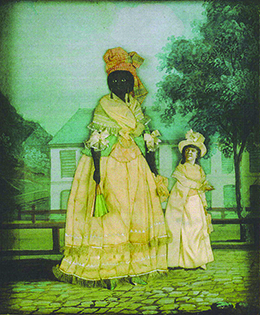| << Chapter < Page | Chapter >> Page > |
Listen to a rendition of “Roll, Jordan, Roll” from the movie based on Solomon Northup’s memoir and life.
Complicating the picture of the antebellum South was the existence of a large free black population. In fact, more free blacks lived in the South than in the North; roughly 261,000 lived in slave states, while 226,000 lived in northern states without slavery. Most free blacks did not live in the Lower, or Deep South: the states of Alabama, Arkansas, Florida, Georgia, Louisiana, Mississippi, South Carolina, and Texas. Instead, the largest number lived in the upper southern states of Delaware, Maryland, Virginia, North Carolina, and later Kentucky, Missouri, Tennessee, and the District of Columbia.
Part of the reason for the large number of free blacks living in slave states were the many instances of manumission—the formal granting of freedom to slaves—that occurred as a result of the Revolution, when many slaveholders put into action the ideal that “all men are created equal” and freed their slaves. The transition in the Upper South to the staple crop of wheat, which did not require large numbers of slaves to produce, also spurred manumissions. Another large group of free blacks in the South had been free residents of Louisiana before the 1803 Louisiana Purchase, while still other free blacks came from Cuba and Haiti.
Most free blacks in the South lived in cities, and a majority of free blacks were lighter-skinned women, a reflection of the interracial unions that formed between white men and black women. Everywhere in the United States blackness had come to be associated with slavery, the station at the bottom of the social ladder. Both whites and those with African ancestry tended to delineate varying degrees of lightness in skin color in a social hierarchy. In the slaveholding South, different names described one’s distance from blackness or whiteness: mulattos (those with one black and one white parent), quadroons (those with one black grandparent), and octoroons (those with one black great-grandparent) ( [link] ). Lighter-skinned blacks often looked down on their darker counterparts, an indication of the ways in which both whites and blacks internalized the racism of the age.

Some free blacks in the South owned slaves of their own. Andrew Durnford, for example, was born in New Orleans in 1800, three years before the Louisiana Purchase. His father was white, and his mother was a free black. Durnford became an American citizen after the Louisiana Purchase, rising to prominence as a Louisiana sugar planter and slaveholder. William Ellison, another free black who amassed great wealth and power in the South, was born a slave in 1790 in South Carolina. After buying his freedom and that of his wife and daughter, he proceeded to purchase his own slaves, whom he then put to work manufacturing cotton gins. By the eve of the Civil War, Ellison had become one of the richest and largest slaveholders in the entire state.

Notification Switch
Would you like to follow the 'U.s. history' conversation and receive update notifications?